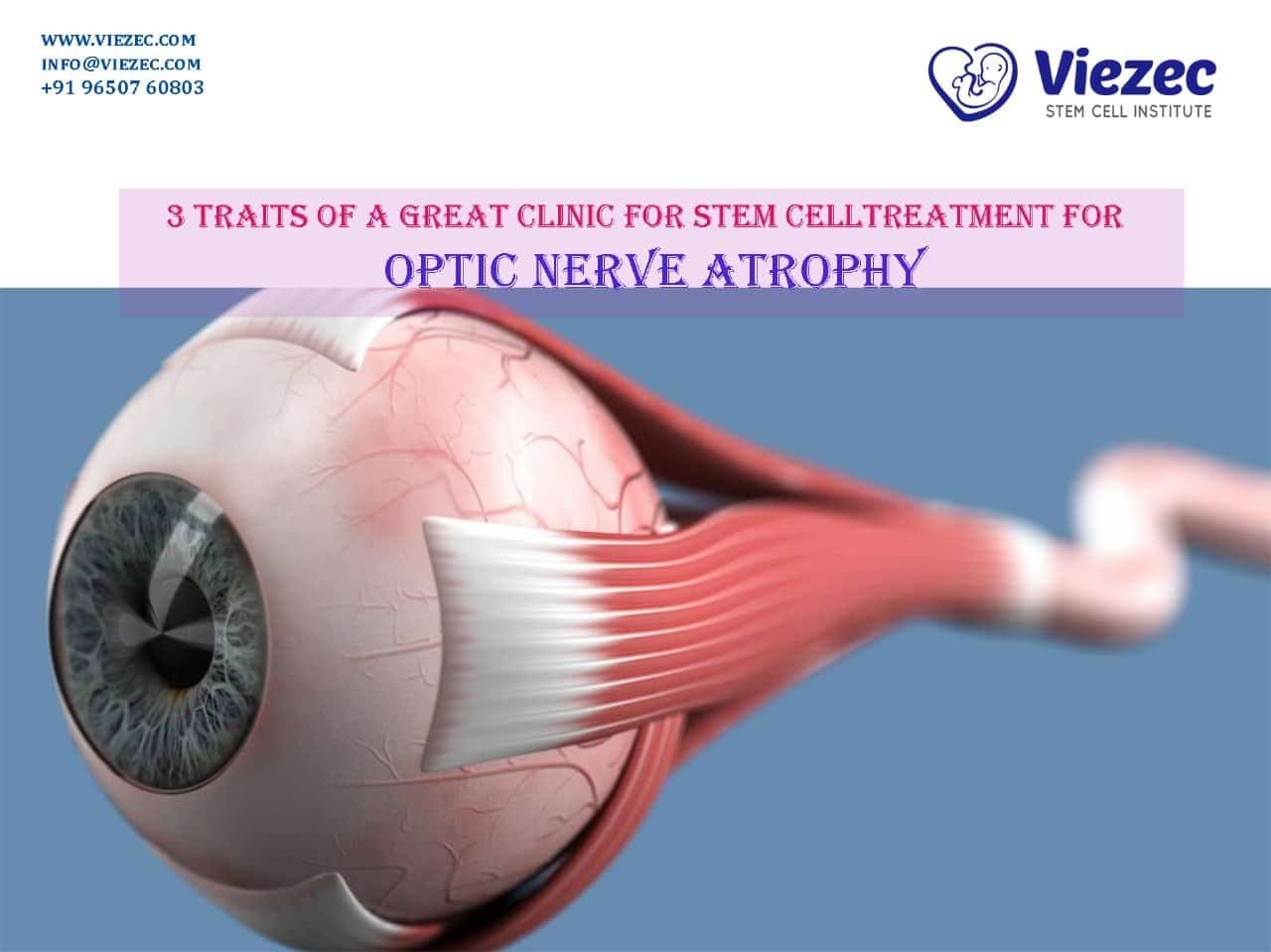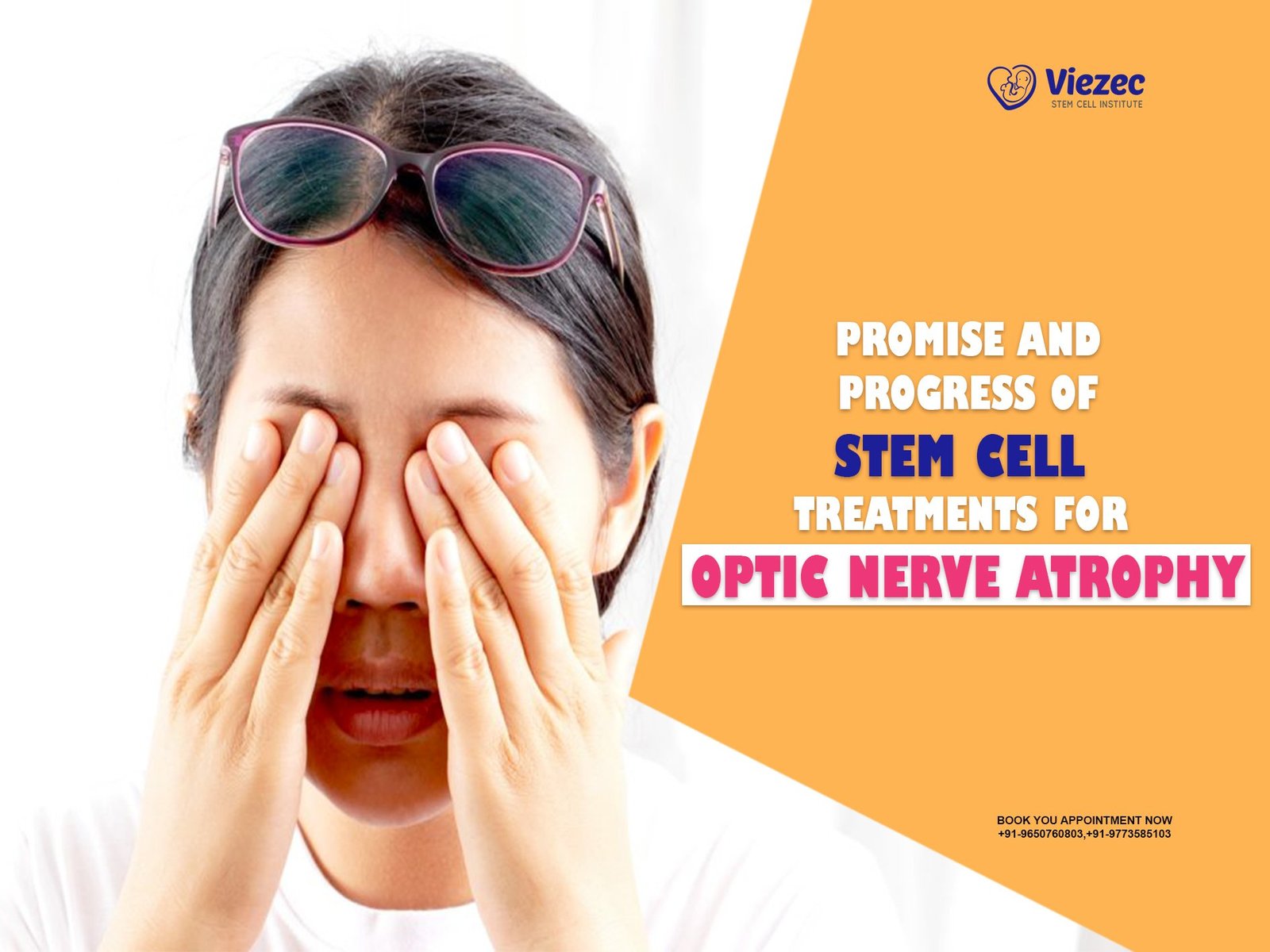Optic Nerve Atrophy (ONA) refers to the damage or degeneration of the optic nerve, which is responsible for transmitting visual information from the eyes to the brain. This condition can lead to a partial or complete loss of vision. ONA is not a disease itself but rather a manifestation of various underlying conditions that affect the optic nerve. The optic nerve is comprised of over one million nerve fibers, and any damage to these fibers can disrupt the transmission of visual signals, resulting in vision impairment. Early diagnosis and intervention are crucial to managing this condition and preventing further vision loss.
Causes and Risk Factors
Several factors can contribute to the development of Optic Nerve Atrophy. These include glaucoma, optic neuritis, ischemic optic neuropathy, traumatic injuries, and certain hereditary conditions. Glaucoma, a group of eye diseases characterized by increased intraocular pressure, can lead to optic nerve damage if left untreated. Optic neuritis, inflammation of the optic nerve, is often associated with multiple sclerosis. Ischemic optic neuropathy occurs when blood flow to the optic nerve is interrupted, usually due to vascular conditions. Additionally, traumatic injuries to the head or eyes can result in optic nerve damage. Genetic factors also play a role, with some individuals being predisposed to conditions that lead to ONA.
Symptoms and Diagnosis
The symptoms of Optic Nerve Atrophy can vary depending on the underlying cause and extent of nerve damage. Common symptoms include a gradual loss of vision, reduced visual acuity, diminished color vision, and a decrease in peripheral vision. Patients may also experience difficulty with depth perception and contrast sensitivity. Diagnosing ONA involves a comprehensive eye examination, including visual field tests, optical coherence tomography (OCT), and imaging studies such as MRI or CT scans. These tests help to assess the structure and function of the optic nerve and identify any underlying conditions contributing to the atrophy.
Understanding Stem Cell Therapy
Basics of Stem Cell Therapy
Stem cell therapy involves the use of undifferentiated cells, known as stem cells, to promote the repair and regeneration of damaged tissues. Stem cells have the unique ability to differentiate into various cell types and self-renew, making them a promising option for treating a wide range of conditions, including Optic Nerve Atrophy. The goal of stem cell therapy is to replace damaged cells, promote tissue repair, and restore function. This innovative approach has gained significant attention in recent years due to its potential to address conditions that currently have limited treatment options.
Types of Stem Cells Used
Several types of stem cells can be used in therapy, including embryonic stem cells, adult stem cells, and induced pluripotent stem cells (iPSCs). Embryonic stem cells are derived from early-stage embryos and have the ability to differentiate into any cell type in the body. Adult stem cells, found in various tissues such as bone marrow and adipose tissue, have a more limited differentiation potential but are still highly effective in regenerative therapies. Induced pluripotent stem cells (iPSCs) are adult cells that have been genetically reprogrammed to an embryonic stem cell-like state. These cells offer the advantage of being patient-specific, reducing the risk of immune rejection.
Mechanism of Action
The mechanism of action for stem cell therapy in treating Optic Nerve Atrophy involves several processes. First, stem cells can differentiate into neural cells, replacing damaged optic nerve fibers. Second, they can secrete growth factors and cytokines that promote tissue repair and reduce inflammation. Third, stem cells can modulate the immune response, preventing further damage to the optic nerve. These combined actions help to restore visual function and slow the progression of ONA. Ongoing research aims to optimize the delivery and efficacy of stem cell therapy for various ocular conditions.
Optic Nerve Atrophy: Current Treatment Options
Conventional Treatments
Conventional treatments for Optic Nerve Atrophy primarily focus on managing the underlying causes and preventing further damage to the optic nerve. These treatments may include medications to lower intraocular pressure in glaucoma, corticosteroids to reduce inflammation in optic neuritis, and vascular therapies to improve blood flow in ischemic optic neuropathy. Additionally, patients may be prescribed visual aids such as glasses or contact lenses to improve visual acuity. While these treatments can help to manage symptoms and slow the progression of ONA, they do not address the underlying nerve damage.
Limitations of Existing Therapies
Despite the availability of conventional treatments, there are significant limitations in their effectiveness for treating Optic Nerve Atrophy. These therapies often provide only symptomatic relief and do not promote the regeneration of damaged optic nerve fibers. As a result, patients may continue to experience a gradual decline in vision over time. Moreover, some treatments, such as corticosteroids, can have adverse side effects when used long-term. The inability to restore lost vision and the potential for side effects highlight the need for innovative approaches like stem cell therapy to provide more effective and lasting solutions for ONA patients.
Emerging Therapies
In recent years, several emerging therapies have shown promise in treating Optic Nerve Atrophy. These include neuroprotective agents, gene therapy, and stem cell therapy. Neuroprotective agents aim to protect the remaining healthy optic nerve fibers from further damage and promote their survival. Gene therapy involves the introduction of healthy genes into damaged cells to correct genetic defects and restore function. Stem cell therapy, as discussed earlier, offers the potential to regenerate damaged optic nerve fibers and restore vision. These emerging therapies represent a significant advancement in the field of ophthalmology and offer hope for patients with ONA.
Stem Cell Therapy for Optic Nerve Atrophy
Scientific Basis and Research
The scientific basis for stem cell therapy in treating Optic Nerve Atrophy is supported by extensive research and clinical studies. Preclinical studies in animal models have demonstrated the ability of stem cells to differentiate into neural cells and integrate into the optic nerve, promoting tissue repair and functional recovery. Clinical trials in humans have shown promising results, with patients experiencing improvements in visual acuity and visual field following stem cell treatment. Ongoing research aims to refine the delivery methods, optimize the types of stem cells used, and identify the most effective therapeutic protocols for ONA.
Benefits and Potential Outcomes
Stem cell therapy offers several benefits for patients with Optic Nerve Atrophy. These include the potential to regenerate damaged optic nerve fibers, restore visual function, and slow the progression of the disease. Additionally, stem cell therapy can reduce inflammation and modulate the immune response, further protecting the optic nerve from damage. Patients undergoing stem cell therapy may experience improvements in visual acuity, color vision, and peripheral vision. While the extent of visual recovery can vary, many patients report significant improvements in their quality of life following treatment.
Comparison with Traditional Treatments
Compared to traditional treatments, stem cell therapy offers a more comprehensive approach to addressing Optic Nerve Atrophy. While conventional therapies primarily focus on managing symptoms and preventing further damage, stem cell therapy aims to repair and regenerate the damaged optic nerve fibers. This regenerative approach addresses the underlying cause of vision loss, offering the potential for more significant and lasting improvements in visual function. Additionally, stem cell therapy has a favorable safety profile, with fewer side effects compared to long-term use of medications like corticosteroids.
Why Choose Delhi for Stem Cell Treatment
Leading Medical Facilities
Delhi is home to some of the leading medical facilities in India, offering state-of-the-art infrastructure and advanced technologies for stem cell treatment. Hospitals and clinics in Delhi are equipped with modern diagnostic and therapeutic equipment, ensuring that patients receive the highest standard of care. These facilities adhere to international standards of quality and safety, providing a reliable and effective environment for stem cell therapy. Patients can expect comprehensive medical services, from initial consultation to post-treatment follow-up, all under one roof.
Expertise and Experience of Doctors
Delhi boasts a pool of highly experienced and skilled doctors specializing in stem cell therapy and ophthalmology. These medical professionals have undergone rigorous training and have extensive experience in treating patients with Optic Nerve Atrophy using advanced stem cell techniques. Their expertise ensures accurate diagnosis, personalized treatment plans, and optimal outcomes for patients. The collaborative approach of multidisciplinary teams, including ophthalmologists, neurologists, and stem cell specialists, further enhances the quality of care provided in Delhi.
Cost-Effectiveness
One of the significant advantages of choosing Delhi for stem cell treatment is the cost-effectiveness of medical services. The cost of stem cell therapy in Delhi is relatively lower compared to many Western countries, making it an affordable option for both domestic and international patients. Despite the lower cost, there is no compromise on the quality of care, as Delhi’s medical facilities maintain high standards of treatment and patient safety. Patients can access world-class stem cell therapy at a fraction of the cost, making Delhi a preferred destination for medical tourism.
Pre-Treatment Evaluation
Initial Consultation
The pre-treatment evaluation for stem cell therapy begins with an initial consultation with a specialist. During this consultation, the patient’s medical history, symptoms, and previous treatments are thoroughly reviewed. The doctor conducts a comprehensive eye examination to assess the extent of optic nerve damage and determine the suitability of the patient for stem cell therapy. This initial consultation is crucial for understanding the patient’s condition and developing a personalized treatment plan that addresses their specific needs and goals.
Diagnostic Tests and Assessments
Following the initial consultation, a series of diagnostic tests and assessments are conducted to gather detailed information about the patient’s ocular health. These tests may include visual field tests, optical coherence tomography (OCT), fundus photography, and imaging studies such as MRI or CT scans. The results of these tests provide valuable insights into the structure and function of the optic nerve, helping the medical team to plan the most effective stem cell treatment. Comprehensive diagnostic evaluations ensure that patients receive accurate diagnoses and tailored treatment plans.
Criteria for Patient Selection
Not all patients with Optic Nerve Atrophy are suitable candidates for stem cell therapy. The criteria for patient selection include the extent and cause of optic nerve damage, overall health status, and the presence of any underlying conditions that may affect the treatment’s success. Patients with progressive vision loss, despite conventional treatments, and those without severe systemic illnesses are considered good candidates for stem cell therapy. The medical team carefully evaluates each patient’s case to ensure that stem cell treatment is the most appropriate and beneficial option for them.
The Treatment Procedure
Preparation and Pre-Treatment Care
Preparation for stem cell therapy involves several steps to ensure the patient’s readiness for the procedure. This includes pre-treatment counseling, where the medical team explains the treatment process, potential risks, and expected outcomes. Patients may be advised to stop certain medications and follow specific dietary guidelines in the days leading up to the treatment. Pre-treatment care also involves ensuring that the patient is in optimal health, addressing any infections or underlying conditions that could affect the treatment’s success. Proper preparation is crucial for maximizing the effectiveness of stem cell therapy.
Administration of Stem Cells
The administration of stem cells for treating Optic Nerve Atrophy typically involves injecting the cells into the vitreous cavity of the eye or directly into the optic nerve. The procedure is performed under sterile conditions in an operating room, often using local anesthesia to ensure patient comfort. The type and number of stem cells used are determined based on the patient’s condition and the treatment protocol. The procedure is relatively quick, and patients can usually return home the same day. The precise delivery of stem cells is critical for achieving the desired therapeutic outcomes.
Post-Treatment Care
Post-treatment care is essential for ensuring the success of stem cell therapy and minimizing potential complications. Patients are provided with detailed instructions on post-treatment care, including medications to prevent infection and reduce inflammation. Regular follow-up appointments are scheduled to monitor the patient’s progress and assess the effectiveness of the treatment. Patients are advised to avoid strenuous activities and protect their eyes from injury during the initial recovery period. Adhering to post-treatment care guidelines is crucial for achieving optimal results and promoting the regeneration of the optic nerve.
Recovery and Rehabilitation
Immediate Post-Treatment Phase
The immediate post-treatment phase involves close monitoring of the patient to ensure a smooth recovery and address any immediate concerns. Patients may experience mild discomfort or swelling, which can be managed with prescribed medications. Vision improvements may not be immediately apparent, as the regenerative process takes time. During this phase, patients are encouraged to rest and follow the medical team’s instructions carefully. Regular follow-up visits are scheduled to monitor the healing process and assess any changes in visual function.
Long-Term Rehabilitation
Long-term rehabilitation is a critical component of the recovery process following stem cell therapy. Patients may undergo visual rehabilitation programs that include exercises and therapies designed to enhance visual function and improve overall quality of life. These programs are tailored to the individual’s needs and may involve activities to improve visual acuity, contrast sensitivity, and peripheral vision. The goal of long-term rehabilitation is to maximize the benefits of stem cell therapy and help patients adapt to any changes in their vision. Ongoing support and guidance from the medical team play a vital role in the rehabilitation process.
Monitoring and Follow-Up
Continuous monitoring and follow-up are essential to evaluate the long-term effectiveness of stem cell therapy and detect any potential complications early. Patients are scheduled for regular eye examinations, visual field tests, and imaging studies to assess the condition of the optic nerve and overall ocular health. The medical team tracks the patient’s progress, making any necessary adjustments to the treatment plan. Monitoring and follow-up ensure that patients receive the best possible care and achieve the maximum benefits from stem cell therapy.
Success Rates and Patient Outcomes
Clinical Studies and Data
Clinical studies and data on stem cell therapy for Optic Nerve Atrophy provide valuable insights into the treatment’s success rates and patient outcomes. Research has shown that stem cell therapy can lead to significant improvements in visual function, with many patients experiencing enhanced visual acuity, color vision, and peripheral vision. The success of the treatment depends on various factors, including the extent of optic nerve damage, the type of stem cells used, and the patient’s overall health. Clinical data supports the potential of stem cell therapy as a promising option for patients with ONA.
Case Studies and Testimonials
Case studies and patient testimonials offer a personal perspective on the effectiveness of stem cell therapy for Optic Nerve Atrophy. Many patients report remarkable improvements in their vision and quality of life following treatment. These testimonials highlight the transformative impact of stem cell therapy, providing hope and inspiration to others facing similar challenges. Case studies often detail the patient’s journey from diagnosis to treatment and recovery, showcasing the real-world benefits of stem cell therapy. These stories serve as a testament to the potential of regenerative medicine in treating ocular conditions.
Factors Influencing Success
Several factors influence the success of stem cell therapy for Optic Nerve Atrophy. These include the patient’s age, overall health, extent and cause of optic nerve damage, and adherence to post-treatment care guidelines. Younger patients with less extensive optic nerve damage tend to have better outcomes. The type and quality of stem cells used also play a crucial role in determining the treatment’s effectiveness. Additionally, the expertise of the medical team and the quality of the medical facility significantly impact the success of the therapy. Understanding these factors helps in optimizing treatment protocols and improving patient outcomes.
FAQs
1. What is Optic Nerve Atrophy, and how does it affect vision?
Optic Nerve Atrophy (ONA) refers to the damage or degeneration of the optic nerve, leading to a partial or complete loss of vision. It affects the transmission of visual information from the eyes to the brain, resulting in symptoms like reduced visual acuity, diminished color vision, and decreased peripheral vision.
2. How does stem cell therapy work for treating Optic Nerve Atrophy?
Stem cell therapy involves using undifferentiated cells to promote the repair and regeneration of damaged optic nerve fibers. These cells can differentiate into neural cells, secrete growth factors, and modulate the immune response, helping to restore visual function and slow the progression of ONA.
3. Why is Delhi a preferred destination for stem cell treatment?
Delhi offers leading medical facilities with advanced infrastructure, experienced doctors specializing in stem cell therapy, and cost-effective treatment options. Patients can access world-class medical care at a fraction of the cost compared to many Western countries, making Delhi a preferred destination for medical tourism.
4. What should patients expect during the recovery and rehabilitation process?
During the recovery and rehabilitation process, patients can expect regular follow-up visits, visual rehabilitation programs, and continuous monitoring to assess progress. Immediate post-treatment care involves managing discomfort and swelling, while long-term rehabilitation focuses on enhancing visual function and adapting to any changes in vision.









